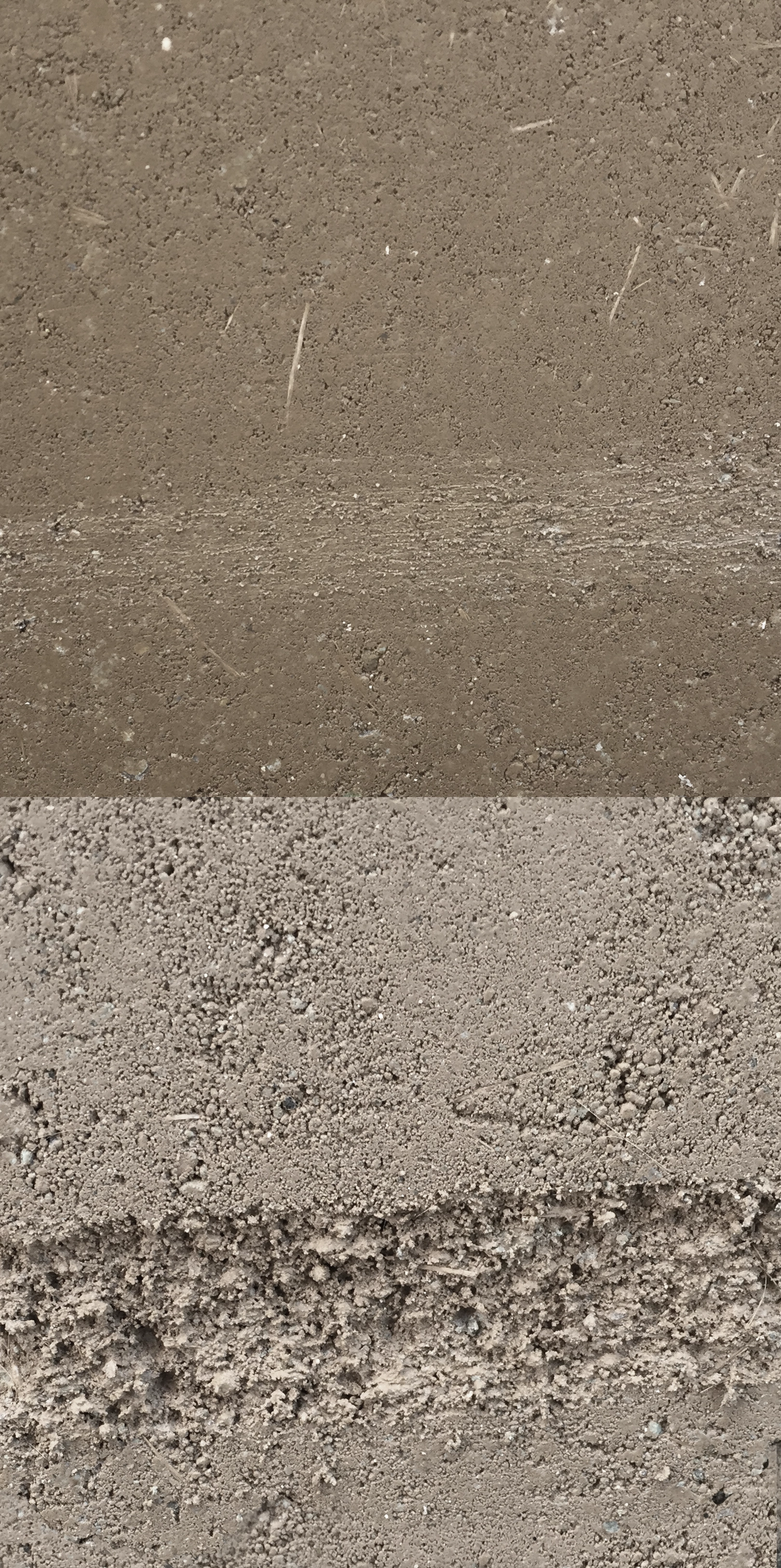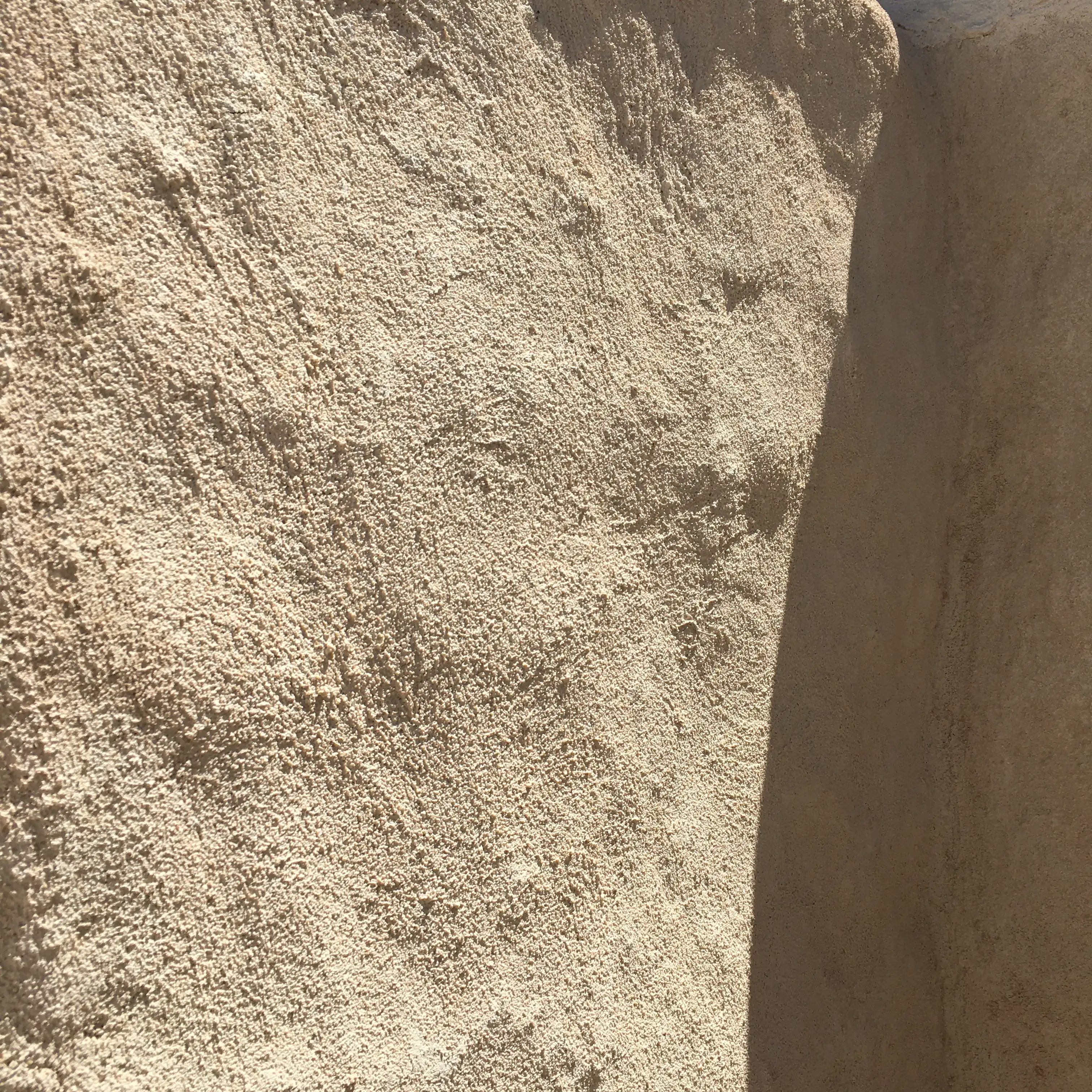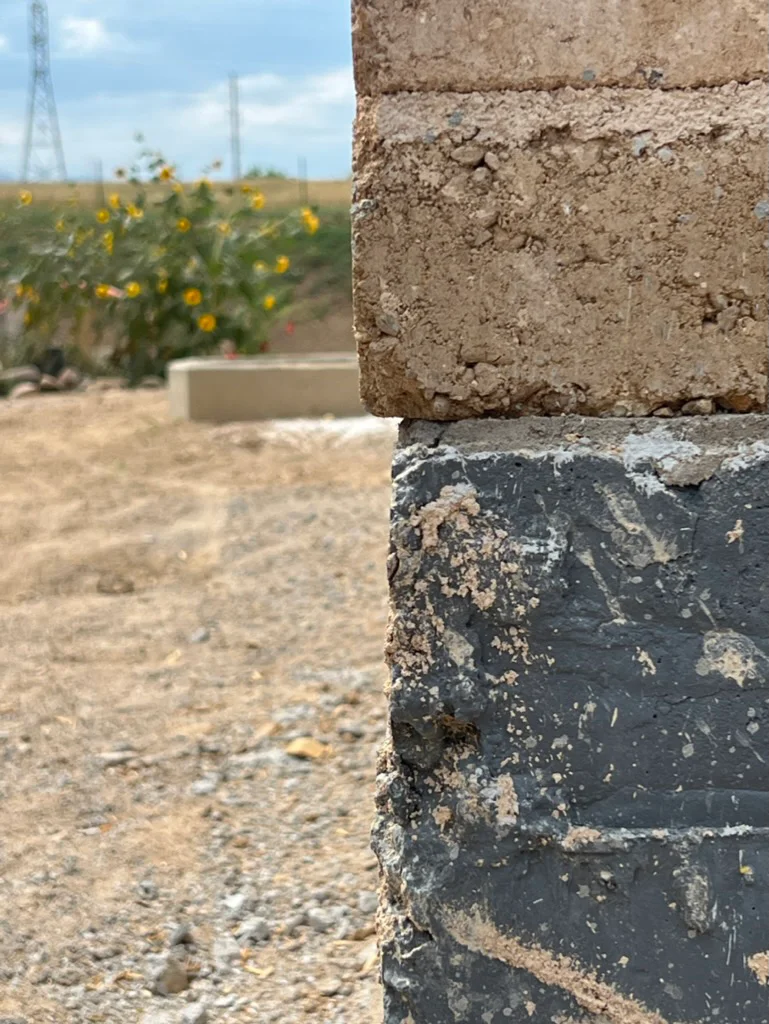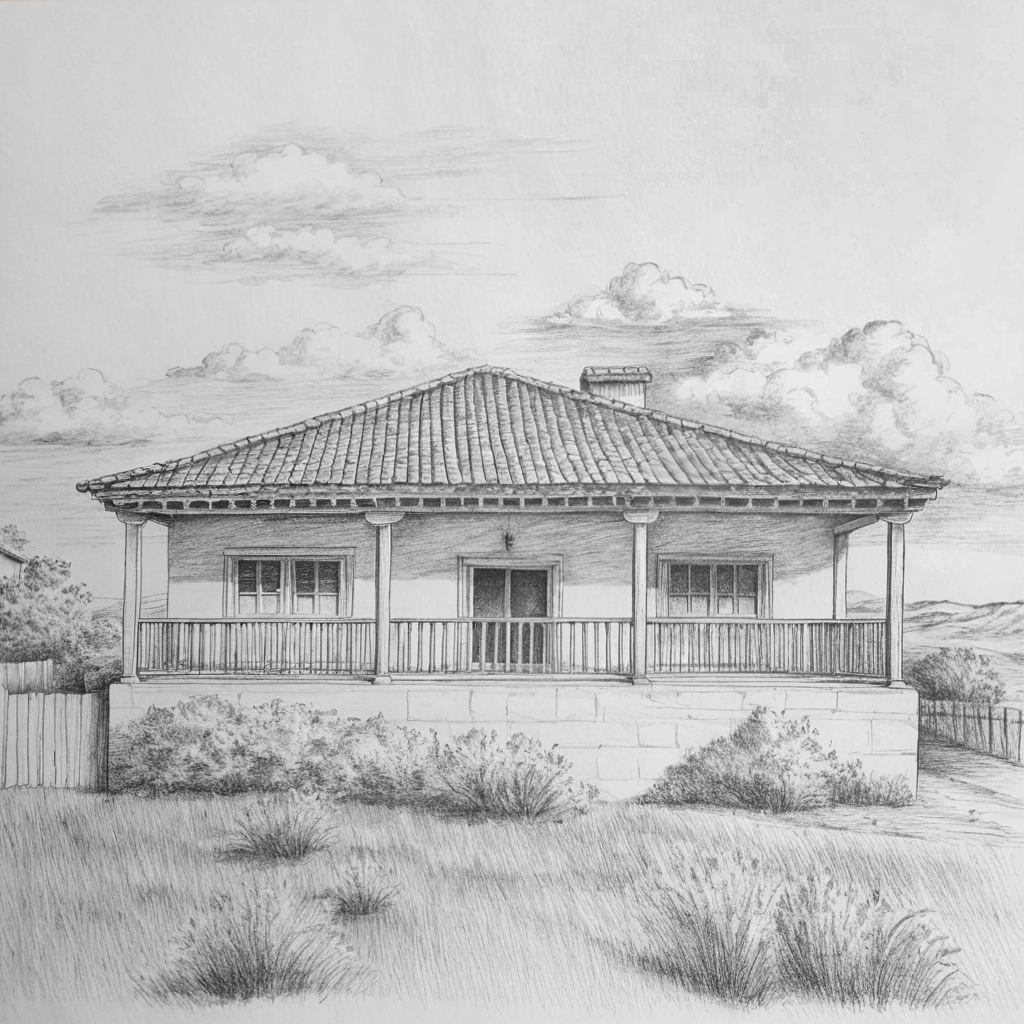Building a Flood Resistant House with Stabilized Earth Blocks
When designing a flood resistant house, material selection plays a key role in long-term performance. Properly selected and treated earth-based materials can offer strong resistance to moisture and structural degradation. Compressed earth blocks, when stabilized with cement or lime, show significantly improved durability in wet conditions and better resistance to weather over time.
While unstabilized earth blocks offer the smallest environmental impact, they can be vulnerable to water, especially during construction or in areas with heavy rainfall, and may degrade or erode when saturated or exposed to prolonged moisture.
Lime offers a middle path: it bonds especially well with clayey soils, enhances long-term durability, and delivers higher vapor permeability and lower embodied carbon than Portland cement. Because lime cures more slowly (especially non-hydraulic types) it does not give the same immediate water resistance as cement, leaving blocks vulnerable to wet conditions until carbonation or hydraulic set is largely complete.
Cement stabilization remains the most common approach for flood protection because it cures quickly, develops high early strength, and markedly improves water resistance. The trade-off is its sizable carbon footprint, so an increasing number of builders are experimenting with partial cement replacements, supplementary pozzolans, and alternative binders to lower the environmental impact while still meeting water-resilience targets.
In the end, the optimal stabilization strategy hinges on a mix of factors: local climate conditions such as rainfall and freeze-thaw cycles, the specific mineral makeup of your soil, the structural and aesthetic goals of the project, relevant code requirements, and how you weigh durability, maintenance, cost, and environmental impact.
Unstabilized vs. Lime vs. Cement Stabilized Earth Blocks
 Scratch Test after water immersion: Cement Stabilized vs Unstabilized CEB
Scratch Test after water immersion: Cement Stabilized vs Unstabilized CEB
There’s ongoing discussion within the natural building community about the use of stabilizers, especially cement, in compressed earth blocks (CEBs). Builders across regions have different preferences based on climate, soil, performance goals, and environmental values. Below is a comparison of unstabilized, lime-stabilized, and cement-stabilized earth blocks, highlighting how each performs in flood-prone environments.
Unstabilized Earth Blocks are composed only of soil and water, making them the most natural and low-carbon option. When protected from moisture, they can last for centuries, as seen in adobe structures worldwide. However, they are vulnerable to degradation during construction and in regions with heavy rainfall or flood risk. To improve water resistance, builders often apply breathable finishes like lime plaster or clay with water-repellent additives. These help shed moisture and reduce erosion, but they require upkeep and can fail during extended exposure to water. Unstabilized blocks can work in wetter climates with excellent design (raised stem walls, wide overhangs) and meticulous maintenance, but they are not considered flood resistant on their own.
Lime-Stabilized Earth can be understood clearly by moving from how the binder works, to how it cures, and finally to how it performs compared with cement:
- Lime binds particularly well to clay-rich soils because the calcium ions in lime react with clay minerals, improving cohesion and long-term strength. (While cement tends to suit sandier soils)
- Non-hydraulic lime hardens by slowly absorbing atmospheric CO₂ (carbonation), so fresh blocks stay vulnerable to rain or saturation for several weeks. Hydraulic lime gains strength in hours to days, yet still lags behind Portland cement in early water resistance and compressive strength.
- Once cured, lime adds meaningful moisture resistance and performs reliably in many climates, even though its ultimate water resistance is lower than that of cement.
- Lime-stabilized blocks remain more vapor-permeable (“breathable”) than cement-stabilized ones. Lime also carries a lower cradle-to-gate CO₂ footprint per kilogram. Because lime re-absorbs some CO₂ during carbonation, its net embodied carbon can be significantly lower than Portland cement for the same strength class.
- Because it balances improved durability with reduced environmental impact, lime is often viewed as the middle ground between raw earth and cement. It is widely accepted in traditional and natural-building circles, especially when the lime is locally sourced.
Cement Stabilization (typically 5–10% by dry weight) is the most widely used method for making CEBs flood resistant. It significantly increases compressive strength, reduces capillary absorption, and provides high durability under prolonged water exposure or heavy rain. This makes it the most reliable choice in flood zones or regions where consistent wetting is expected. However, cement production has a high carbon footprint, and some natural builders argue that its use undermines the ecological goals of earth construction. That said, for builders prioritizing performance and long-term resilience in wet conditions, cement stabilization remains the most effective method currently available.
Blended Stabilizers (Lime + Cement or Natural Additives) - Blending small amounts of cement with lime, or combining either with natural additives like fibers or pozzolans, can offer a thoughtful middle ground between durability and environmental goals. For example, using 4–6% cement with 2–4% lime can reduce shrinkage and improve workability while still providing meaningful water resistance. Some studies have also explored adding straw, biochar, or ash to improve performance and reduce reliance on industrial binders. These blends may not reach the full flood resistance of high-cement mixes, but they can enhance durability in wetter climates while respecting ecological concerns. However, performance depends heavily on soil type, proportions, and testing. This approach is well-suited for builders looking to minimize cement use without fully sacrificing moisture protection. Enhancing the Durability of Earth Construction in Flood-Prone Regions through Clay Stabilization (2024)
Flood-Resistant Finishes for Earth Block Walls

When building a flood resistant house with either stabilized or unstabilized earth blocks, finishes are a critical line of defense against standing water, wind-driven rain, and splash-back. In flood-prone regions, the most effective finishes are both breathable and water-shedding, allowing moisture to escape from the wall while protecting it from external wetting. A few commonly used options include:
- Lime plaster: A traditional choice for earthen buildings, lime plaster is vapor-permeable and water-resistant. When properly applied and maintained, it helps protect walls from rain and humidity while allowing trapped moisture within the wall to evaporate. Lime plaster can be made from non-hydraulic lime, which sets slowly by absorbing carbon dioxide from the air, or from hydraulic lime, which sets faster and offers greater water resistance. In flood-prone areas, hydraulic lime plaster (often called hydraulic lime render) is typically preferred, especially near the base of walls where splash-back and saturation are most likely. However, it is important to note that lime plasters are highly regional. Their composition, color, and performance vary depending on local materials, climate, and manufacturing processes. Application is usually done by skilled local artisans, which adds to both the beauty and the cost. Custom, site-mixed plasters or imported specialty products can increase expenses, but their effectiveness and longevity often justify the investment.
- Natural or mineral paints: Silicate-based mineral paints and limewash are breathable finishes that help shed water without sealing the wall. They pair well with lime plasters and can be used inside or out, depending on the setting. Mineral paints, such as potassium silicate, are ideal for flood-prone interiors or utility areas where durability and mold resistance matter. Limewash, made from slaked lime, offers excellent breathability and a soft matte finish, though it may need more frequent reapplication. Natural paints, like clay or casein-based options, work well in dry interior spaces where non-toxic materials and moisture buffering are priorities. It is best to avoid acrylic or impermeable paints, as they can trap moisture and lead to problems like internal damage or spalling.
A "Good Hat & Boots" for Flood Resistant House Design
I n earthen construction, builders often say a home needs “a good hat and good boots.”
The “hat” is robust protection from above, including deep roof overhangs that shade the walls and direct runoff away from the foundation.
The “boots” are smart defenses below grade, such as a raised stem wall, a brick or stone plinth, and a gravel splash zone that prevents soil moisture from wicking into the walls. When paired with appropriate stabilization and a well-chosen breathable finish, these passive measures create a layered defense system that helps earthen walls manage moisture more effectively and enhances a home’s flood resilience.
In short, matching your soil with the appropriate binder and layering it with smart moisture-management details is the key recipe for a durable, flood resistant house.
For an inspiring real-world example, see the METI Handmade School in Rudrapur, Bangladesh, designed by Anna Heringer, one of my favorite architects. The school pairs a raised brick plinth with wide bamboo roof eaves to demonstrate how effectively the “good hat and good boots” principle can protect earthen walls.

